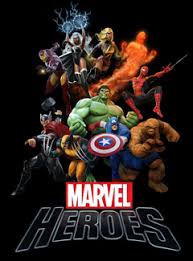Doing research, looking for any documentation to riva tuner server overlay and copying here. Youtube channels were also pretty helpful. A combination of the below and a youtube video. I’ve stored the files I used here on github.
Pasting From Guru3d Forums
Important for beginners:
- Macros share their name space with data sources, so if you want to use %CPU%, make sure you don’t have your CPU load or temperature source named the same.
- Names of tags and macros are case sensitive. “App” is not the same as “APP”.
- The individual layer “refresh period” is for smooth timer based animations and does not poll data sources more or less often.
- It is best practice to reset your own tags for color (<C>) and font size (<S>) at the end of a layer to avoid it spilling into the next layer. “Use custom text color” automatically appends <C>.
Macros
%CPUFull% %GPUFull% CPU/GPU name as seen in device manager
%CPU% %GPU% Less verbose version of the above
%RAM% %VRAM% Amount of RAM/VRAM (e.g. 12GB)
%Driver% Graphics driver and version (e.g. Adrenalin 2020 20.4.2)
%Time12% Time of day in 12 hour format (e.g. 07:52:12 PM)
%Time24% Time of day in 24 hour format (e.g. 19:52:12)
%Date% Date in local short format (e.g. 05/12/21 or 12.05.21 etc.)
%PingAddr% Display address that you set up for ping tests.
%Timer% Displays your timer value (e.g. 0:00:10). Use HotkeyHandler.dll plugin to arm the timer.
%TimerFlashing% Same as above, but flashes the timer slowly when it reaches 0:00:00.
%TimerHiding% Same as above, but hides the timer when it reaches 0:00:00.
%PollingTime0% Polling time for external sources*.
%PollingTime1% Polling time for internal HAL sources*.
* Polling times are divided into internal and external sources: Internal refers to the “Internal HAL” set of data sources provided by the overlay editor plugin itself, while external sources are all the rest: MSI Afterburner, HWiNFO64, AIDA64, Windows Performance Counters and the invisible RTSS sources that provide frame times.
Static Information
<API> 3D API name (e.g. OpenGL, Direct3D11, …)
<APP> Compact version of the above (e.g. OGL, D3D11, …)
<EXE> Application file name without path (e.g. googleearth.exe)
<ARCH> For 64-bit programs or UWP apps this prints either “x64” or “UWP”. Empty otherwise.
<RES> Current framebuffer resolution (e.g. 1920×1080)
<TIME=format> Print date/time using Python format strings and US locale.
WARNING: For performance reasons you are responsible for validating the format string. Invalid strings can crash RTSS.
Frame times / benchmarking
<FT> Frametime in milliseconds with one decimal (e.g. 16.7)
<FR> Framerate. Select “Display integer framerate” option in RTSS to round to integer.
<FRMIN> Minimum framerate*.
<FRMAX> Maximum framerate*.
<FRAVG> Average framerate*.
<FR01L> Framerate of 1% slowest frames. (See also “Percentile calculation” option)*.
<FR10L> Framerate of 10% slowest frames. (See also “Percentile calculation” option)*.
<BTIME> Duration of current benchmark run (e.g. 01:12:34)*.
* Benchmarking has to be enabled via “Enable benchmark mode” option or hotkeys for these to be filled.
Formatting
<S=…> Sets the font size in percent. Negative value produce subscript instead of superscript.
Sizes 50, 100 and 200 have their own sprites and look best. Other sizes will be resized versions of those three.
<S> Reset font size to 100%.
<C=aarrggbb> Hex color code. Alpha cannot be zero.
<C> Reset color and opacity.
<A=n> Opens a “box” of n grid cells width within which following elements are aligned. (This is what tables are made of.)
Positive values align left within the box, negative values align right.
<A>/<A=0> Finishes an open alignment box and moves the cursor to the right of it.
<TT=name> Insert tags to render a named text table. Cursor will be placed after the last defined cell.
Store and recall
For the <S=>, <C=> and <A=> tags, there are memory slots from 0-255 that can be written to by using the regular tag with an index, e.g. <C25=FF208030> to store a color at index 25 and <C25> to recall and use it. This functionality is used internally to optimize duplicate colors, font sizes and alignments away. If you want to use this feature and inadvertently overwrite slots used by the optimizer, then colors, font sizes or alignments will be off. Use the “Tools” menu to display the hypertext and read the dark blue part at the start to check.
Drawing
<P=x,y> Set new cursor position*.
<P0>…<P8> Move cursor to screen corner or edge indexed from left to right, top to bottom.
<B=x,y> Draw a rectangle at the cursor in the current color*.
<G=…> Insert a graph based on a data source*. Use UI to create it.
<I=…> Insert a static image*. Use UI to create it.
<AI=…> Insert a sprite animation driven by a data source*. (Custom gauge.) Use UI to create it.
* Individual x or y coordinates, widths and heights can be positive or negative. Positive values measure pixels while negative values count grid cells. In each case, “0,0” is the top left screen corner. Keep in mind that the “On-Screen Display zoom” in RTSS affects the scaling.
Formulas
The current data source is stored in x. Aside from the basic operators +, -, * and / you can also use % (the modulo operator) and ^ (x to the power of y) as well as parenthesis. Be aware that when you divide integers by integers the result will also be an integer (rounded towards zero). So if you want to use fractional numbers divide by a floating point number like so: x/1024.0.

